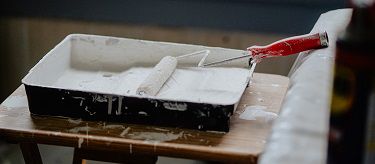When my wife and I bought our home about 20 years ago, one of the things that appealed to us was the back yard. We had young kids and wanted an outdoor space where they could play independently. And while the back yard was small, it had a deck, two maple trees for a bit of shade, and a nice lawn with room for a swing-set. Our back yard was ready for our young family.
Fast-forward to last spring. Our backyard situation had changed dramatically. The maple trees had grown and kept the yard in shade most of the day, and keeping our lawn alive each summer was an exercise in futility. Plus, it had been years since our kids needed an outdoor play area.
In short, we no longer loved our back yard. It was time for a makeover.
After much debate we decided what we wanted to do: get rid of what grass remained, add a stone patio around the deck, expand our garden, and put up hammock posts. With our destination set, the next question was – how do we get there? We knew we’d have to buy the stones, posts, and mulch either way. But paying a landscaping company to do the work would add thousands of dollars to the overall cost. With some hesitation, we decided to tackle the project ourselves.
With tearing out the lawn, hauling stones, leveling the patio, and digging the post holes by hand, our backyard makeover was every bit as much work as we expected.
But it also involved lots of family time. Our kids helped. We shared some laughs. And, though we were often tired and sore at the end of the day, it was a good tired. When we were finally done, our back yard had turned out even better than we expected.
Yes, a professional would have given us a nice back yard. But, because we did it ourselves, we have a nice back yard and an ongoing sense of pride and satisfaction every time we look out the window.
If you’ve ever built, fixed, or created something yourself, you can probably relate to this experience. In fact, our tendency to value something more if we’ve done it ourselves is so prevalent that it has a name: The Ikea Effect. Understanding the Ikea Effect could help you make decisions that improve your finances and your happiness.


